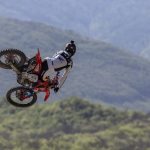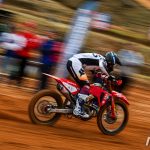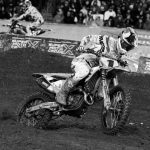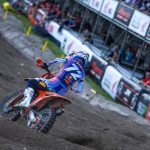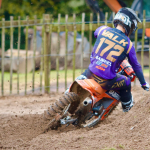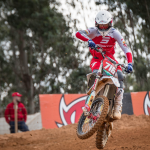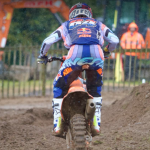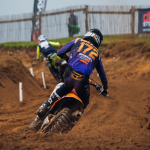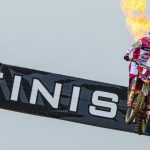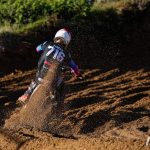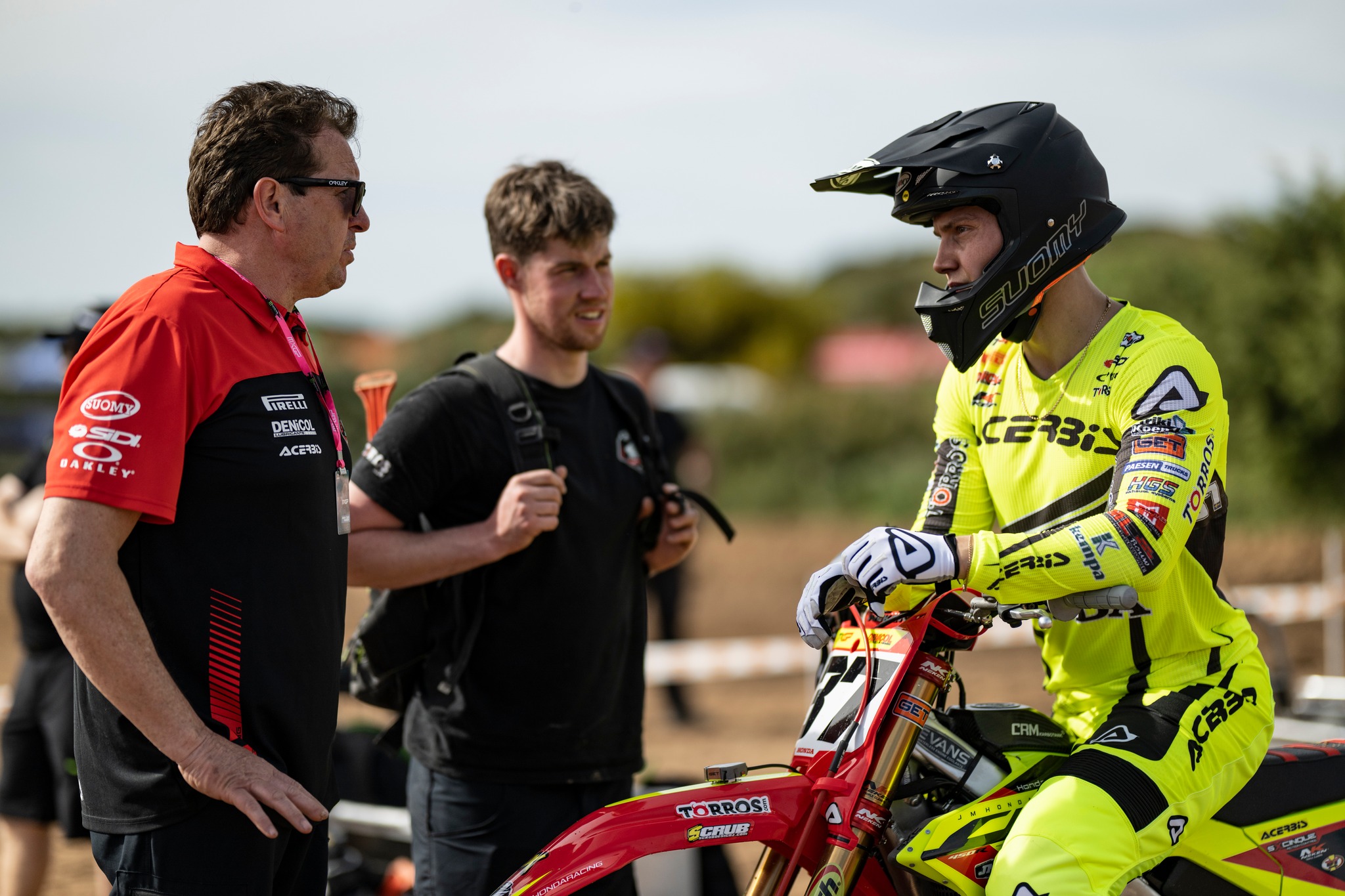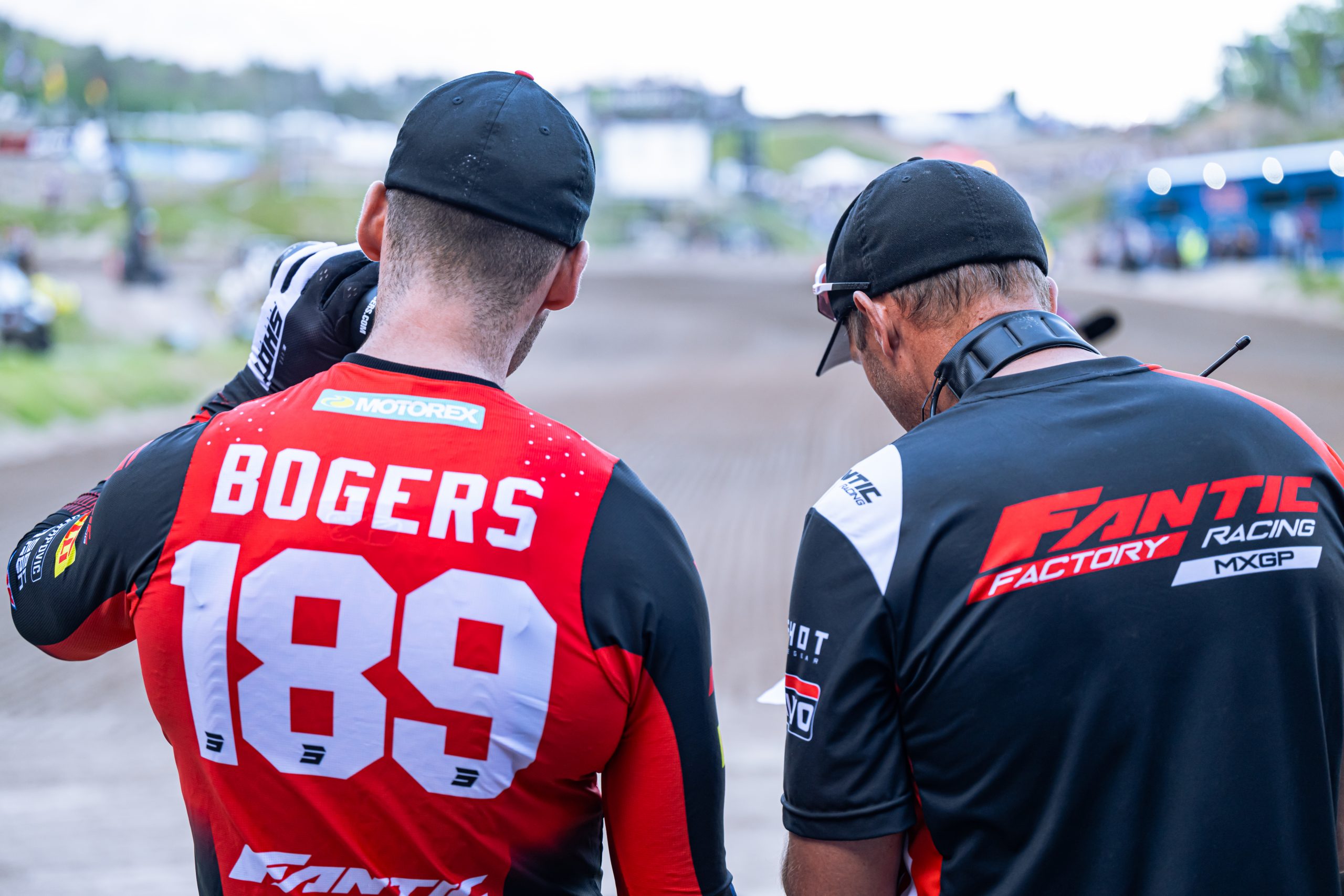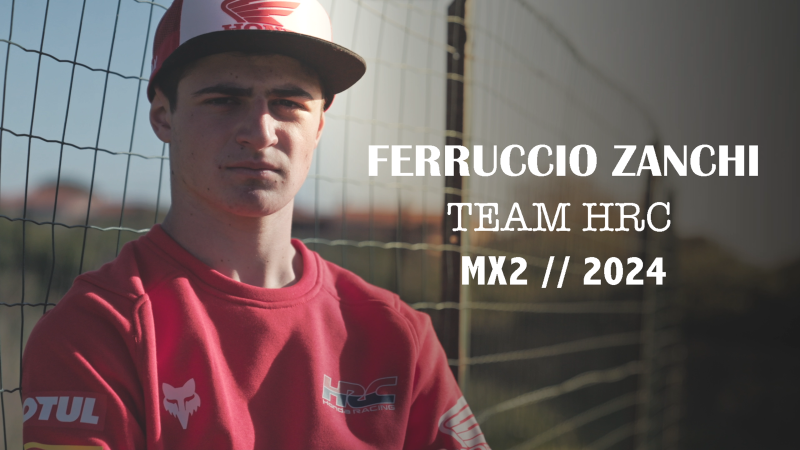Kevin Frelaud from DailyMX recently had an indepth interview with Seb Tortelli regarding the Stark Varg and was kind enough to send us for publication.
Seb, I would like to go back in time a little. At the time, what attracted you to the Stark project, and what made you embark on this adventure?
Tortelli: One day, a friend I had in common with Anton Wass told me I should talk to him. I asked what it was about but this person couldn’t tell me more. From there, I called Anton to find out a little more, and he couldn’t tell me either. He offered me a meal together so we could talk about his project; I signed a non-disclosure agreement and Anton then explained to me that he was building an electric cross bike. I told him that if it was like what was happening at the time, namely a cross between mountain biking and MX, that didn’t interest me. I didn’t want to associate my name with that kind of thing, or take the time for it. From there he showed me the first sketches, he told me about the power they wanted to achieve, etc. That was a project that interested me. This discussion was a year before I joined the company. I joined Stark Future right before launch, when they were able to have a bike that was capable of running and being ready. Over the year, I went back and forth to Spain from time to time to see the progress, once a month, to help them on the project.
Between the first day you were able to test the bike, the day it was revealed to the public, and today, how much has the Stark finally evolved?
Tortelli: It has evolved a lot, without evolving too much at the same time. The first one that was born already had a good basic package. The evolution we have today is little things here and there, almost everywhere on the bike. In particular by doing endurance testing, testing in challenging conditions. We could see certain problems appear, problems which we resolved gradually to improve the bike, to arrive today at this Varg which is capable of competing.
Ultimately, did Stark expect to have such a large influx of orders? It seems to me that there were supply problems, but are they able to meet orders today?
Tortelli: The bike was well received, and better than we expected. You should know that Alta were the precursors of this movement. At the time, I think they sold 1,500 motorcycles over all their years of production, so we started with an equivalent figure. Finally, in the space of one day, we had already exceeded this objective. Today, we are dealing with a much larger number of orders and that is why we had to restructure many things internally. We were forced to change buildings and these major changes meant that we had a bit of a delay in operations and therefore in production. There were supply problems afterwards. The particularity of the thing is that today, our technology is different from what is on the market, our demands are different, so our suppliers were forced to adapt and we had difficulty in get them aligned at the desired level as quickly as desired. There was a real transition that took time, so that we could have the pieces we wanted, at the level we wanted.
There was Virginie Germond on the French Women’s Championship, there is now Thomas Do on the SX Tour, recently we spoke with Karl Barbarit on the National 450. Seen from the outside, we have the impression that Stark is there to show the bike, promote the bike, but also and above all to do a lot of testing in real conditions. Looking at the number of people who are under the awning this weekend in Grenoble, that’s still the feeling I have.
Tortelli: Quite. The first race was me who did it with Virginie on a local circuit. It was just to see how the machine behaved against other 250 and 450 riders. We were still in the pre-test phases. After which, Virginie was able to ride the bike a little and that allowed her to compete in the French Women’s Championship. This is natural evolution. We have to go through the evolution of the motorcycle, but also the evolution of the federations so that we are authorized to ride, and all that doesn’t happen overnight. Our goal was above all to be able to work with the federation to allow them to have a platform to learn what electricity is. Today, we are here to stay, and we must make appropriate regulations. This is why Thomas is allowed in the French SX championship as a wildcard; We can thus improve the regulations and, if everything goes well and through the conditions of the federation, we hope to be able to be part of the championship next year. Today, there are parallel developments: those at the level of the regulations, and that at the level of the motorcycle itself. We need developments at the level of competitions, federations, promoters; everything has to line up but it takes time.
We see that in the automobile sector, electric technology evolves quite significantly every year. Even if we are tempted by electric, we can also say to ourselves that we will wait for these new technologies to evolve further before taking the plunge, so as not to end up with an outdated model within one or two years… Is this a problem that Stark face?
Tortelli: No. For our part, our bike is constantly evolving. We do not rely on the production of new models each year as manufacturers can do. As soon as something new arrives, it is directly implemented in production. Today, the big work of evolving the material part – that is to say frame, parts – has been done. At this level, it will be a few years before we see any new developments. Today, the developments we are making are software developments and the machine can therefore evolve daily via updates. The first work was physical work, today we are working on coding and improving the software. The advantage is that the person who bought the first motorcycle and the person who buys the motorcycle tomorrow will have the same software because the updates are done automatically through our system. The machine is what it is, there will be developments every month, through the cloud. We improve as we learn, but changes will be made through updates to the Varg software.
What comes up quite often is that the Varg doesn’t make any noise and you can’t hear it coming. Can we know if Stark Future intends to make any changes at this level?
Tortelli: It’s a good question, but I couldn’t answer it. It’s a question mark. In any case, I know that this is not company policy so for the moment, it is not in the pipeline. We are more based on safety, the identification of problems, we have a lot of sensors on the bike so that the riders have alerts before problems occur. Today, we are more focused on performance and problem prevention. Our goal is that if a Varg owner encounters a problem, the factory can be informed in real time, in order to be able to anticipate and be able to respond as quickly as possible.
When can we hope to say that the Varg will be able to do 35 minutes and 2 laps with a GP rider?
Tortelli: It all depends on the objective. Today, we cannot do this at a grand prix for the simple reason that we have not been accepted into the manufacturers’ association.
Have the manufacturers vetoed it?
Tortelli: Yes, some. We endure a little. I think technology is a little scary today, and we have been avant-garde. There have been a few alarm bells ringing and today, it is not as simple as we would like. We are truly the only machine of this type on the market. I think this will change in the future, when other electric machines arrive. Today, you can already do a 35-minute moto, but not at GP level. This is something that will come in the future. We know that the evolution in batteries is of the order of 7 to 8% per year, this is the average curve while knowing that certain steps forward are faster. Today, we work a lot on the management and use of the battery to last as long as possible. Having a high-level grand prix rider who would ride in soft conditions is not yet possible. I can ride the Varg for 30 minutes on drier terrain and at good speed, but I no longer have the pace of the GP riders.
Today, the first customer for this machine is not the GP rider. That was not our objective. The bike was designed for people who want to have fun like Anton Wass. He’s a motorcycle enthusiast and he wanted a bike that could match the kind of person he is, that is, someone who rides at a certain level – probably national level or less – and who doesn’t want to bother with maintenance. Someone who wants to please themselves in a simple way. The idea of this motorcycle was to have a tool that could allow people to have fun easily, without having certain technical constraints: having to learn how to manage a clutch, to shift gears, to make a filter. , to do an engine oil change, a clutch, etc… The objective is to simplify all that to have fun with an easy motorcycle. Today, if a high-level rider rides the Varg, there will be less difference with a thermal motorcycle because the high-level rider does things mechanically, he doesn’t think about when or how to shift gears, he doesn’t think about his engine speed, he knows, it’s instinctive. On the other hand, the person who starts with a Varg will be able to have fun with this motorcycle directly and will be able to quickly progress in engine sizes, because everything is managed on the phone.
I ride with the Varg, and I also still ride on thermals because we’re doing testing and it’s important to be up to date. I have a much easier time making the transition from thermal to electric than the other way around. The Varg is easy to ride, whereas when I come back on a thermal I have a lot of things to do again, and it takes a little more time. You have to get on the bike, try it out and draw your own conclusion. This is the best way to judge the machine today. There’s a lot of “they say”, but until you step on it, you don’t know what it is. She doesn’t have to please everyone either.
The idea was not to replace enthusiasts’ thermals, but above all to reach a new audience?
Tortelli: Quite. The idea was to breathe new life into the sport by making it accessible again. What we have seen for years is that our sport has become specific, the grounds are ever further away, the constraints ever greater. What we want is to be able to bring a motorcycle closer to cities and allow people to discover the sport through the ease of riding that this motorcycle represents.
In terms of infrastructure, are we ready, in France, to welcome Stark fleets on the ground?
Tortelli: We have quite a few projects on this, it’s on the way. When the first Teslas arrived, there were no chargers everywhere and today, almost all stations are equipped with them. I think there is a time of adaptation. When there are several brands on the market, it will also be easier to have charging stations on the grounds. I know that the regions are interested in this “green” side and offer subsidies for this electricity market. We are at the start of a revolution, these are the first steps. Today, not all circuits are capable of accommodating a ton of Starks. In one or two years, it will have evolved the same way it evolves today. It takes time, but we have taken the first steps.
If I’m not mistaken, you’ve been to every SX Tour race this season. What is your role today with Thomas Do and Stark?
Tortelli Mainly, my role is to be test director. I did this whole part before and there, we entered the competition a little faster than expected so we are still in a phase of evolution in terms of equipment for the competition. This is why I am present at the races with our official Stark riders. We’re still in testing and I’m making sure everything goes correctly. If there are problems, since I have quite a few hours riding this bike, I am able to help find solutions. We are going towards an official competition team and obviously, given my past, I will also necessarily be involved in the competition.
What assessment do we draw from Thomas Do’s performance with this machine so far?
Tortelli: We are satisfied. We entered a championship in progress, Thomas was riding a 450 and he went down to the 250 to ride on the Stark. It was a double challenge for him, a major one. We arrive, we learn, improvements are made gradually. We have already evolved quite a bit between the first SX Tour and today. We can see that Thomas is getting better and better results, and it’s also because we are adapting to the competition. We understand a little more what the bike needs to be competitive in these conditions. There is an evolution in terms of testing done outside of events, but there is also an evolution linked to competition, at the highest level. This allows us to send more information back to the factory, and therefore to production. Having a competition team is important to us, because it allows us to push the equipment to higher levels while gathering a lot of information.
Are we able to know if Stark will be an official team at the French championships in 2024? Elite, SX Tour, even national?
No, we are not able to know that today. Quite simply because the French federation commission has not yet taken place, and that is where all the decisions will be made. We will have to wait for this conference.
In 2024, we will be fully present in the British Arenacross championship, we already have agreements with riders in this championship and they will be officially integrated into the championship with points. Next year we will also be included in the championships in Australia – MX & SX. We finished the tests with the Australian federation and they were able to compare the bikes, check the operation of the Varg and the powers. There is progress, we may be international next year, but it is still far from being done. We are still in the early stages and in a month, I think we will already know more about the championships in which we will be able to compete next year.
Interview: Kevin Frelaud/DailyMX




